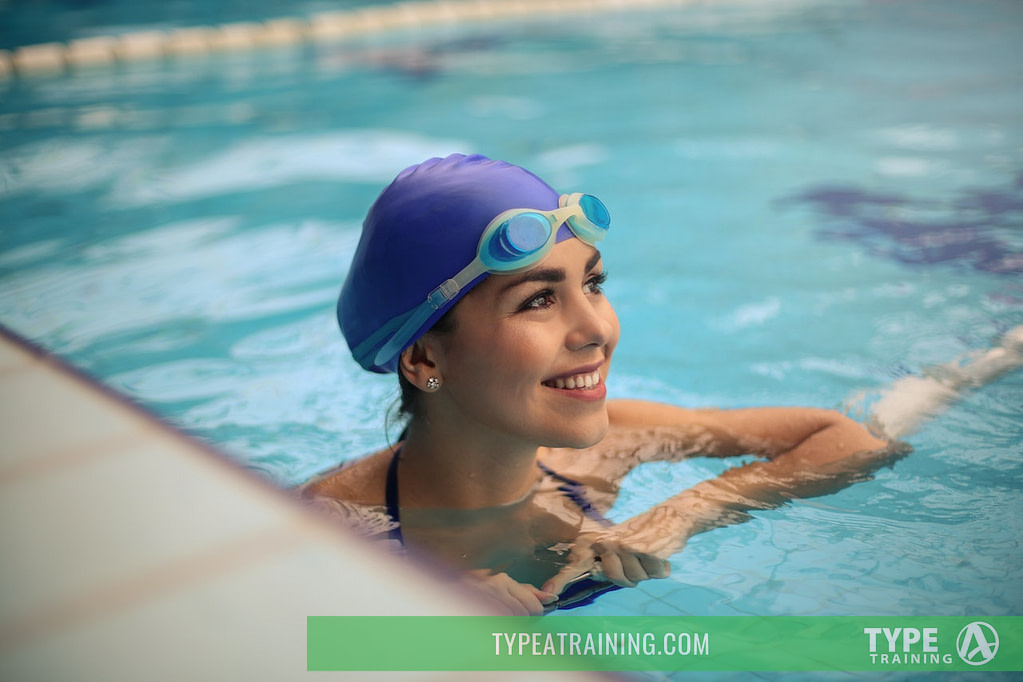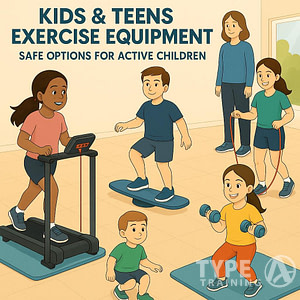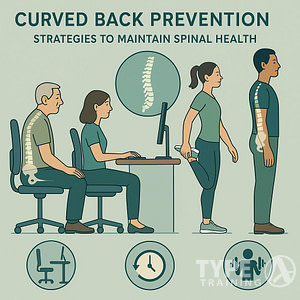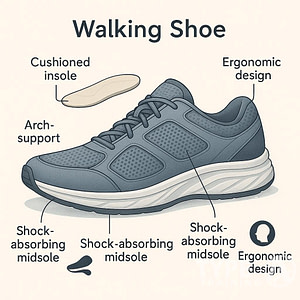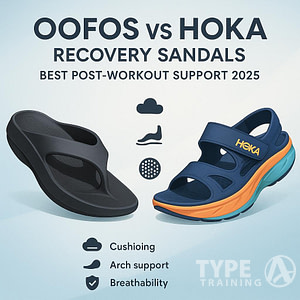Image source: swimming.org
If you’re looking for a low-impact way to recover from an injury or improve your overall health, running in a pool may be just what you need. Pool running, also known as aqua jogging, is a form of cross-training that involves running in deep water with the help of a flotation belt. This type of exercise can provide a variety of benefits, including improved cardiovascular fitness, increased strength and endurance, and reduced risk of injury.
One of the biggest advantages of pool running is its low-impact nature. Because the water supports your body weight, there is less stress on your joints, making it an ideal exercise for those recovering from an injury or suffering from conditions such as arthritis. Additionally, the resistance provided by the water can help improve muscle strength and endurance, making it an effective way to cross-train for runners and other athletes.
Key Takeaways
- Pool running is a low-impact form of exercise that can help improve cardiovascular fitness, strength, and endurance.
- Running in deep water provides resistance that can help build muscle and improve overall fitness.
- Pool running is an ideal form of cross-training for runners and other athletes, as well as those recovering from an injury or suffering from conditions such as arthritis.
Benefits of Running in a Pool for Health Recovery
If you’re looking for a low-impact workout that can help with rehabilitation and injury recovery, running in a pool might be just what you need. Here are some of the benefits you can expect:
Popular posts:
Increased Resistance
Running in water provides a higher level of resistance than running on land, which means you’ll have to work harder to move through the water. This increased resistance can help you build strength and endurance, as well as improve your overall fitness level. It can also help you burn more calories, which can be beneficial if you’re trying to lose weight.
Low-Impact Workout
One of the biggest benefits of running in a pool is that it’s a low-impact workout. Unlike running on hard surfaces like pavement or concrete, running in water puts less stress on your joints, which can help reduce your risk of overuse injuries. This makes it an ideal workout for people who are recovering from injuries or who have chronic conditions like arthritis.
Rehabilitation and Injury Recovery
Running in a pool can be an effective way to rehabilitate after an injury. The buoyancy of the water can help support your body weight, which can reduce the impact on your joints and muscles. This can be especially helpful if you’re recovering from an injury or surgery and need to avoid putting too much stress on your body.
In addition to reducing the risk of injury, running in a pool can also help speed up the recovery process. The water can help increase circulation and oxygen consumption, which can help your body heal faster.
Other benefits of running in a pool include:
- Improved cardiovascular health
- Increased endurance
- Reduced stress on the body
- Improved balance and coordination
Overall, running in a pool can be a great way to improve your fitness level and recover from injuries. Whether you’re looking for a low-impact workout or a way to improve your endurance, running in a pool can help you achieve your goals.
Pool Running Form and Technique
When it comes to pool running, proper form and technique are essential for a safe and effective workout. In this section, we’ll cover the key elements of proper form, as well as the equipment and accessories you’ll need to get the most out of your pool running sessions.
Proper Form
To maintain proper form while pool running, it’s important to keep your body upright and engage your core muscles. This will help you maintain balance and stability in the water. Here are some key tips for maintaining proper form:
- Stand upright with your shoulders back and your head up.
- Keep your arms at your sides and your elbows bent at a 90-degree angle.
- Maintain a high knee lift as you “run” in the water, bringing your knees up to your chest with each stride.
- Avoid leaning forward or backward, which can throw off your balance and lead to inefficient movement.
- Keep your movements smooth and controlled, focusing on your breathing and maintaining a steady pace.
Equipment and Accessories
To get the most out of your pool running workouts, you’ll need a few key pieces of equipment and accessories. Here are some of the most important items to consider:
Aqua Jogging Belt
An aqua jogging belt (also known as a flotation belt) is an essential piece of equipment for pool running. This belt helps you stay afloat in the water, allowing you to focus on your form and technique without worrying about sinking.
Flotation Vest
Another option for staying afloat during pool running is a flotation vest. These vests are similar to life jackets, but are designed specifically for aquatic exercise. They provide more buoyancy than an aqua jogging belt, making them a good choice for beginners or those who are less confident in the water.
Paddles and Bands
To add resistance to your pool running workouts, you can use paddles or bands. Paddles attach to your hands and increase the amount of water you’re pushing against with each stroke, while bands provide resistance as you move your legs through the water.
Waterproof iPod
Finally, if you want to listen to music or other audio during your pool running workouts, consider investing in a waterproof iPod or other waterproof audio device. This will allow you to stay entertained and motivated while you exercise, without worrying about damaging your electronics.
By following these tips for proper form and using the right equipment and accessories, you can get the most out of your pool running workouts and enjoy all the benefits of this low-impact, high-intensity exercise.
Pool Running Workouts
If you’re looking for a low-impact workout that can help you recover from injuries, pool running might be the perfect solution for you. Here are some pool running workouts that you can try out:
Interval Training
Interval training is a great way to build endurance and speed. You can do interval training in the pool by alternating between high-intensity sprints and recovery periods. For example, you can sprint for 30 seconds and then jog for 30 seconds. Repeat this for 10 to 15 minutes.
Tempo Runs
Tempo runs are a great way to improve your lactate threshold and running economy. In the pool, you can do tempo runs by maintaining a steady pace for a certain period of time. For example, you can run at a moderate pace for 10 minutes, then increase your pace for 5 minutes, and then return to your moderate pace for another 10 minutes.
Cross-Training
Pool running is a great cross-training exercise for runners. You can use it to supplement your running workouts or to give your joints a break from the impact of running. You can also try other cross-training exercises in the pool, such as cycling or upper body exercises.
Strength Training
Pool running can also be used as a strength training exercise. By using a flotation belt, you can run with your legs only, leaving your arms free to do other exercises. For example, you can do arm curls or shoulder presses while running in the pool.
Deep Water Running
If you’re looking for a more challenging workout, try deep water running. This involves running in the deep end of the pool without touching the bottom. This can help improve your balance, coordination, and core strength.
Pool Workouts
There are many different types of pool workouts that you can try out. For example, you can do repeats by running back and forth across the pool, or you can do laps using different strokes. You can also use pool noodles or other flotation devices to add resistance to your workouts.
Recovery Tool
Pool running can also be used as a recovery tool. If you’re recovering from an injury, pool running can help you maintain your fitness level without putting stress on your joints. You can also use pool running as a way to cool down after a workout.
Cycling
In addition to running, you can also use a stationary bike in the pool. This can provide a low-impact workout that can help improve your cardiovascular fitness and leg strength.
Upper Body
Pool running can also be used as a way to work your upper body. By using your arms to move through the water, you can strengthen your back, shoulders, and arms. You can also try other upper body exercises in the pool, such as pushups or tricep dips.
Repeats
Repeats are a great way to improve your speed and endurance. In the pool, you can do repeats by running back and forth across the pool at a high intensity. For example, you can sprint across the pool and then jog back. Repeat this for 10 to 15 minutes.
Lacrosse
If you’re a lacrosse player, pool running can be a great way to improve your fitness level and endurance. You can use pool running to simulate the high-intensity sprints and stops that are required in lacrosse.
Pool Running for Runners
If you’re a runner looking for a low-impact cross-training option or a way to recover from an injury, pool running, also known as aqua jogging, may be an excellent choice. Here are some of the benefits of pool running for runners.
Injury Prevention
Pool running is a great way to prevent injuries, especially to the hip flexors. The water’s buoyancy helps reduce the impact on your joints and muscles, making it a low-impact workout that’s easy on your body. Pool running also allows you to maintain your range of motion while giving your body a break from the high-impact forces of running on land.
Performance Training
Pool running can also be an effective performance training tool for runners. By mimicking the running motion in the water, you can improve your running form and strengthen your muscles. Pool running can also help you increase your endurance and speed, making it a great way to supplement your marathon training.
When incorporating pool running into your training routine, it’s important to warm up and cool down properly. Start with a few minutes of easy pool running to warm up your muscles before moving into your workout. After your workout, cool down with a few minutes of easy pool running to help your body recover.
If you have access to a deep end in a lap pool, you can also incorporate deep water running into your routine. Using a flotation belt, you can run in place in the deep end, which can provide an even greater low-impact workout.
To avoid hip flexor injury, make sure to maintain proper form while pool running. Keep your core engaged and your hips stable, and avoid overstriding or leaning forward.
Overall, pool running can be an excellent way for runners to maintain their fitness while avoiding injury or recovering from one. Talk to your coach or physical therapist to see if pool running is right for you.
Pool Running for Rehabilitation
If you are recovering from an injury and are looking for a low-impact exercise that can help you maintain your fitness level, pool running may be an excellent option. Pool running, also known as aquatic therapy or deep-water running, is a non-impact modality of cross-training that involves running in a pool while wearing a flotation belt. Here are some sub-sections to consider:
Aquatic Therapy
Aquatic therapy, also known as water therapy or hydrotherapy, is a type of physical therapy that is performed in a pool. This type of therapy is often used to help people recover from injuries or surgeries, as it provides a low-impact environment that can help reduce pain and inflammation. Aquatic therapy can also help improve range of motion, flexibility, and strength.
Deep-Water Running
Deep-water running involves running in water deep enough that you cannot touch the bottom of the pool. This type of exercise is often used as a form of cross-training by runners, as it provides a low-impact workout that can help maintain fitness levels while reducing the risk of injury. Deep-water running can also be used as a form of rehabilitation for people recovering from injuries, as it provides a low-impact environment that can help reduce pain and inflammation.
When performing deep-water running, it is important to wear a flotation belt to help keep you afloat. You can also use hand paddles or ankle weights to add resistance to your workout. To get the most out of your deep-water running workout, it is important to maintain good form and technique. This includes keeping your core engaged, maintaining a neutral spine, and using proper arm and leg movements.
If you are new to deep-water running, it is a good idea to work with a coach or trainer who can help you develop a workout plan that is tailored to your needs and goals. A coach can also help you with proper form and technique, and can provide guidance on how to gradually increase the intensity and duration of your workouts.
In conclusion, pool running can be an excellent option for people who are recovering from injuries or who are looking for a low-impact form of exercise that can help maintain fitness levels. Whether you choose to do aquatic therapy or deep-water running, be sure to work with a coach or trainer who can help you develop a safe and effective workout plan.
Pool Running Safety and Precautions
When it comes to pool running, safety should always be a top priority. Here are some precautions you can take to ensure a safe and effective workout.
Warm-Up and Cool-Down
Before you start your pool running workout, it’s important to properly warm up your muscles. Start with some easy pool running or walking for 5-10 minutes to get your heart rate up and your muscles ready for more intense exercise. After your workout, take some time to cool down by gradually slowing down your pace and doing some light stretching.
Injury Prevention
Pool running is a low-impact exercise that can be a great option for those recovering from an injury. However, it’s important to take steps to prevent injury while pool running. Here are some tips to keep in mind:
- Start slowly and gradually increase your intensity and duration over time.
- Use proper form by keeping your core engaged, your arms pumping, and your feet flexed.
- Avoid overexertion by listening to your body and taking breaks as needed.
- Consider wearing water
shoes to provide extra support and traction on the pool floor. - If you have a history of stress fractures or joint problems, consult with your doctor before starting a pool running routine.
By taking these precautions and following proper warm-up and cool-down routines, you can safely and effectively incorporate pool running into your workout routine.
Sample Workout Routine for Someone Who Wants to Give It a Try
If you’re new to running in the pool, it’s important to start slowly and gradually increase the intensity and duration of your workouts. Here’s a sample workout routine to help you get started:
Warm-Up
Before you start running, it’s important to warm up your muscles and get your heart rate up. Here’s a sample warm-up routine:
- 5 minutes of easy jogging in place
- 5 minutes of leg swings (10 reps on each leg)
- 5 minutes of arm swings (10 reps on each arm)
Main Workout
For the main workout, you’ll be running in the pool. Here’s a sample workout routine:
- 10 x 50m sprints (rest for 30 seconds between each sprint)
- 4 x 100m runs (rest for 1 minute between each run)
- 2 x 200m runs (rest for 2 minutes between each run)
Cool-Down
After your main workout, it’s important to cool down and stretch your muscles to prevent injury and soreness. Here’s a sample cool-down routine:
- 5 minutes of easy jogging in place
- 5 minutes of stretching (focus on your legs and arms)
Tips for Success
Here are a few tips to help you succeed with your pool running workout routine:
- Wear a comfortable swimsuit and goggles
- Use a waterproof fitness tracker to track your progress
- Set realistic goals and gradually increase the intensity and duration of your workouts
- Stay hydrated by drinking plenty of water before, during, and after your workouts
- Listen to your body and rest if you feel tired or sore
Remember, pool running is a low-impact exercise that can be a great way to recover from injuries or prevent them from happening in the first place. With a little bit of practice and dedication, you can achieve your fitness goals and enjoy the many benefits of running in the pool.
Conclusion
In conclusion, incorporating pool running into your workout routine can bring many benefits for health recovery. Here are some key points to remember:
Recap of Key Points
- Pool running is a low-impact exercise that can help reduce the risk of injury while still providing a great cardiovascular workout.
- Running in deep water can provide additional resistance, which can help strengthen muscles and improve overall fitness.
- Pool running can be a great way to recover from injuries or to maintain fitness while recovering from an injury.
Encouragement to Try Pool Running
In addition to pool running, you may also want to consider incorporating Pool Running into your routine. This can help improve your overall health and fitness by promoting weight loss, reducing inflammation, and improving insulin sensitivity.
Final Tips and Advice for Success
Here are some final tips and advice to help you get the most out of your pool running routine:
- Start slow and gradually increase your time and intensity to avoid injury.
- Consider working with a trainer or physical therapist to develop a safe and effective pool running program.
- Mix up your routine by incorporating other pool exercises, such as water aerobics or swimming laps.
- Stay hydrated and fuel your body with healthy, nutrient-dense foods to support your overall health and fitness.
By following these tips and incorporating pool running into your routine, you can enjoy the many benefits of this low-impact exercise for health recovery.
Frequently Asked Questions
Does running in a pool help with recovery?
Yes, running in a pool can help with recovery. Water provides a low-impact environment that reduces stress on your joints, muscles, and bones. This makes it an ideal exercise for people who are recovering from an injury, surgery, or chronic pain. Pool running can help you maintain your fitness level while you heal and prevent further injuries.
What are some pool recovery workouts?
Pool recovery workouts can include deep water running, shallow water running, water aerobics, and swimming. Deep water running involves running in water deep enough that you cannot touch the bottom of the pool. Shallow water running involves running in water up to your waist. Water aerobics involves performing exercises in water, such as jumping jacks, lunges, and squats. Swimming is also a great pool recovery workout that can help you improve your cardiovascular health and strengthen your muscles.
Can pool running improve muscle recovery?
Yes, pool running can improve muscle recovery. Running in water provides resistance that can help you build and strengthen your muscles. It also increases blood flow to your muscles, which can help you recover faster from workouts and injuries. Pool running can be especially beneficial for people with muscle strains, sprains, or soreness.
Is pool running good for athletes?
Yes, pool running is good for athletes. It can help them maintain their fitness level while reducing the risk of injury. Pool running can also help athletes recover faster from workouts and injuries. It is a great cross-training exercise that can improve their cardiovascular health, strengthen their muscles, and enhance their performance.
What are some shallow water pool running workouts?
Some shallow water pool running workouts include high knees, butt kicks, side shuffles, grapevines, and cross-country skiing. These exercises can help you improve your balance, coordination, and agility. They can also help you burn calories, tone your muscles, and increase your endurance.
How long should pool recovery sessions last?
Pool recovery sessions should last between 30 and 60 minutes. This is enough time to get a good workout without overexerting yourself. You can start with shorter sessions and gradually increase the duration as you get stronger and more comfortable in the water. Make sure to stay hydrated and take breaks as needed to avoid fatigue and injury.

